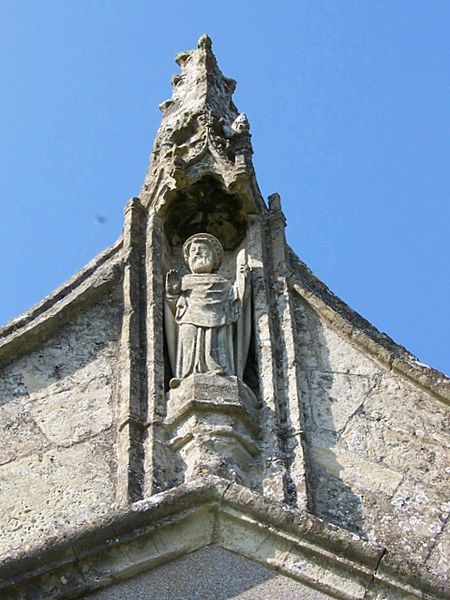Image: Statue, The Church of St Julian the Hospitaller, Wellow - geograph.org.uk - 1288959

Description: Statue, The Church of St Julian the Hospitaller, Wellow. Wellow is only one of seven churches in England dedicated to the patron of all wayfarers. He is better supported in Europe and the Middle East, with stained glass at both Chartres and Rouen Cathedrals, but is mentioned in the Prologue of Chaucer's Canterbury Tales. There are two versions of his story, agreeing in general apart from the reason for his acts of charity only being penitence for murder, the other (with his equally devoted wife) the result of a vision on his marriage night. Dedicated in the 9th century, the story was first quoted by St Antonine in circa 387AD. However, many later writings claim the former to be entirely mythical, since he has no fixed date, no country of origin, nor tomb or record of burial, while the latter is usually a joint dedication with that of his wife, Bassilissa. It seems that in England, the former is taken as correct, since no mention is made of Bassilissa, and at Wellow he is depicted in both stained glass and stone. His legend is roughly as follows: Julian was said to have been a nobleman, young and wealthy, possibly Egyptian by birth, living towards the end of the Roman Empire. Whilst hunting one day, the stag he was stalking warned him that if he killed the stag, he would also kill his parents. He duly killed the stag and later, due to a case of mistaken identity, killed both his parents. Having travelled to Rome with his wife for absolution, he undertook to devote his life to the suffering and poor. They turned his parent house into a hospital, to care for pilgrims as they passed, with Julian also acting as ferryman to those crossing the river on whose banks the house stood. Here they continued until his wife's death. During the reign of Diocletian, Julian was denounced as a Christian, and after a brief term of imprisonment somewhere in Egypt, was cruelly put to death. Here at Wellow, a statue in the niche of the porch shows St Julian holding an oar and blessing those who enter. Also, he is depicted in the east window, holding an oar in one hand and the church in the other. Other references are the hunting scenes and the running stag seen in the tie beam roof to the Nave.
Title: Statue, The Church of St Julian the Hospitaller, Wellow - geograph.org.uk - 1288959
Credit: From geograph.org.uk
Author: Trish Steel
Usage Terms: Creative Commons Attribution-Share Alike 2.0
License: CC BY-SA 2.0
License Link: https://creativecommons.org/licenses/by-sa/2.0
Attribution Required?: Yes
Image usage
The following page links to this image:

